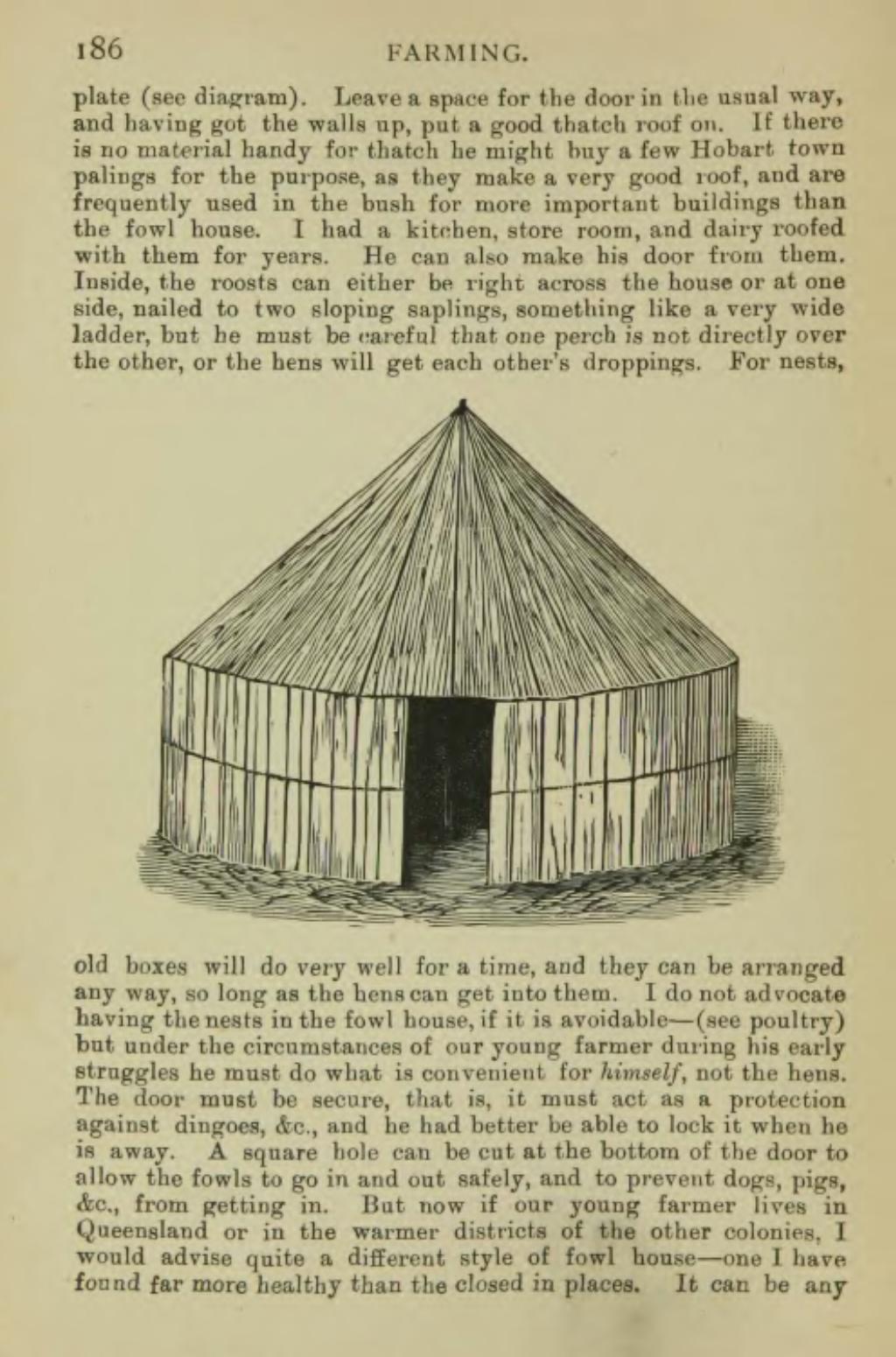plate (see diagram). Leave a space for the door in the usual way, and having got the walls up, put a good thatch roof on. If there is no material handy for thatch he might buy a few Hobart town palings for the purpose, as they make a very good roof, and are frequently used in the bush for more important buildings than the fowl house. I had a kitchen, store room, and dairy roofed with them for years. He can also make his door from them. Inside, the roosts can either be right across the house or at one side, nailed to two sloping saplings, something like a very wide ladder, but he must be careful that one perch is not directly over the other, or the hens will get each other's droppings. For nests,

old boxes will do very well for a time, and they can be arranged any way, so long as the hens can get into them. I do not advocate having the nests in the fowl house, if it is avoidable—(see poultry) but under the circumstances of our young farmer during his early struggles he must do what is convenient for himself, not the hens. The door must be secure, that is, it must act as a protection against dingoes, &c., and he had better be able to lock it when he is away. A square hole can be cut at the bottom of the door to allow the fowls to go in and out safely, and to prevent dogs, pigs, &c., from getting in. But now if our young farmer lives in Queensland or in the warmer districts of the other colonies, I would advise quite a different style of fowl house—one I have found far more healthy than the closed in places. It can be any
